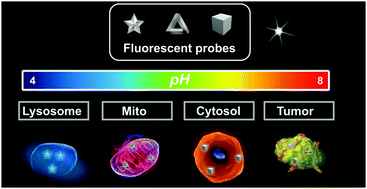Fluorescent bioimaging of pH: from design to applications
Abstract
Protons play crucial roles in many physiological and pathological processes, such as receptor-mediated signal transduction, ion transport, endocytosis, homeostasis, cell proliferation, and apoptosis. The urgent demand for pH imaging and measurement in biological systems has incited the development of fluorescent pH probes. Numerous fluorescent probes have been reported, but many lack the abilities needed for biological applications. Hence, the development of new pH probes with better biocompatibility, sensitivity, and site-specificity is still indispensable. This review highlights the recent trends in the development of fluorescent materials as essential tools for tracing pH variations in the biological processes of diverse living systems.



 Please wait while we load your content...
Please wait while we load your content...